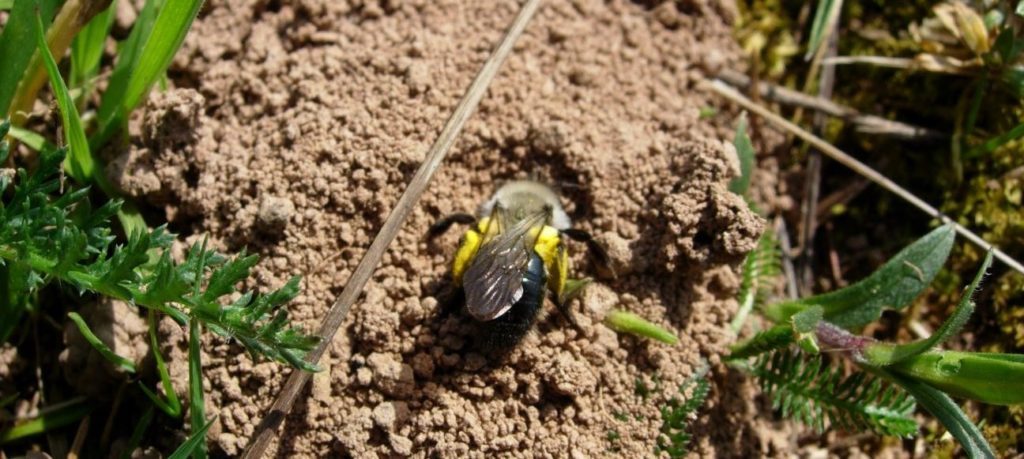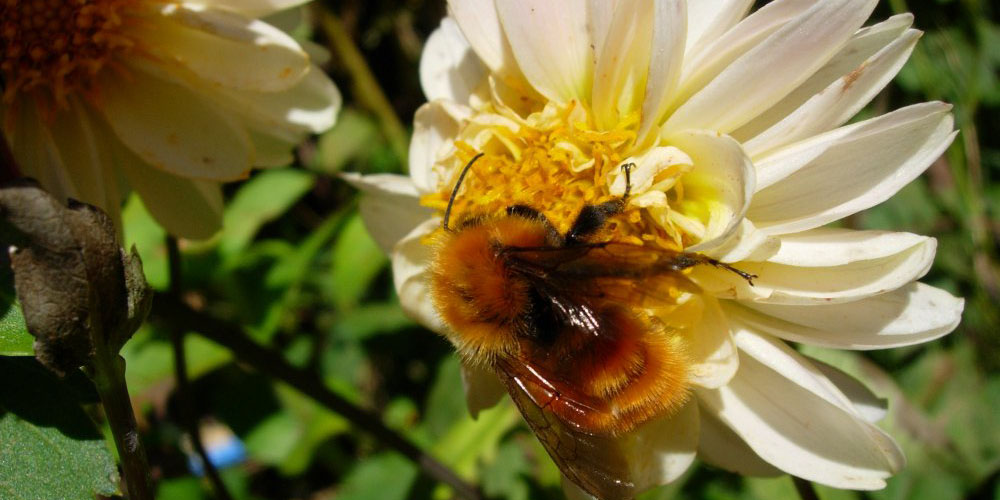Climate change increases the ocean level and provokes more severe weather events, but also is a serious threat for biodiversity. This consequence of global warming is less obvious and doesn’t get much public attention. Despite it will influence also our everyday lives. Let me explain.
Every species has a distinct time in which it is active, reproduces or migrates. The science of this “specialisation in time” is called “phenology”. It observes at what time trees get their leaves, birds come back to North for the breeding season or bee species fly. As bees closely interact with flowering plants, they have to be active when the plants they rely on are blooming. Therefore, flowering plant phenology and bee phenology are “synchronized”. This may sound abstract, but just think of when you see both flowers and bees. Both is more probable in summer than in winter, isn’t it?
Climate change affects flowers…
If you have hay fever, you may have noticed that your symptoms appear earlier now than years ago. Many plants flower earlier because of warmer winter temperatures. Because of this, the pollen of wind pollinated plants is in the air earlier – and you begin to suffer much earlier, too.
This has consequences for bees: they rely on flowers during their whole life-cycle. How much flowers are available in their flight period and in their flight range strongly affects their survival and how much offspring they have. Let me give an example: goat willows are an important pollen source in early spring for many bees. Honey bee colonies usually increase their brood activity when male goat willow catkins become all fluffy and yellow. But also bumblebees and solitary bees forage on it. Their is even a mining bee specialized on willows: Andrena vaga. I already presented this species in my bee nutrition series.

Andrena vaga is specialized on willow pollen.
However, goat willows often anticipate their blooming after a mild winter. In 2008, this was very notable in Hesse, in central Germany. The German meteorological service DWD recorded that goat willows bloomed more than 15 days earlier than “usual”. In the period from 1997-2017, goat willow begins to flower around the 19th March in Germany (depending on the region, of course). In 2008, in average it began already around the 1st March.
… and bees
And the bees? Well, their activity depends not only on the mild winter, but also on the weather during the flowering periods. In 2008, it was quite cold and rainy in Hesse during the goat willow bloom. Some beekeepers reported that their colonies didn’t develop well in spring because they couldn’t use this important pollen source. This is only anecdotal evidence and we know even less how it went that year for bumblebee queens or Andrena vaga females also relying on this plants.
In a recent review, Jane Ogilvie and Jessica Forrest analysed how the interaction between different bee traits and floral phenology shapes bee communities. Different bee species have different life-histories and, therefore, anticipated blooming affects them differently. For instance, social species like honey bees or bumblebees are active during the whole vegetation period. They experience resource turnover (i.e. certain flowers fade, others come up) and probably also some shortage (not enough flowers in their flight range). On the other hand, they are quite flexible and may use alternative flowers.
Pollen specialists like Andrena vaga don’t have this choice. If because of cold and rain the females hatch when the willow bloom is over, this means that they won’t provide as many nests as when their activity period and willow bloom is synchronized. As Ogilvie and Forrest pointed out, we don’t have studies analysing the effects this shift in flowering time has on solitary pollen specialists. It’s more than urgent to begin with this research. I have repeatedly pointed out how much bee/pollinator diversity matters, also for our food security. Even if we can’t foresee the consequences of global warming for bee diversity, the evidence we have by now is a strong argument to protect the climate.



